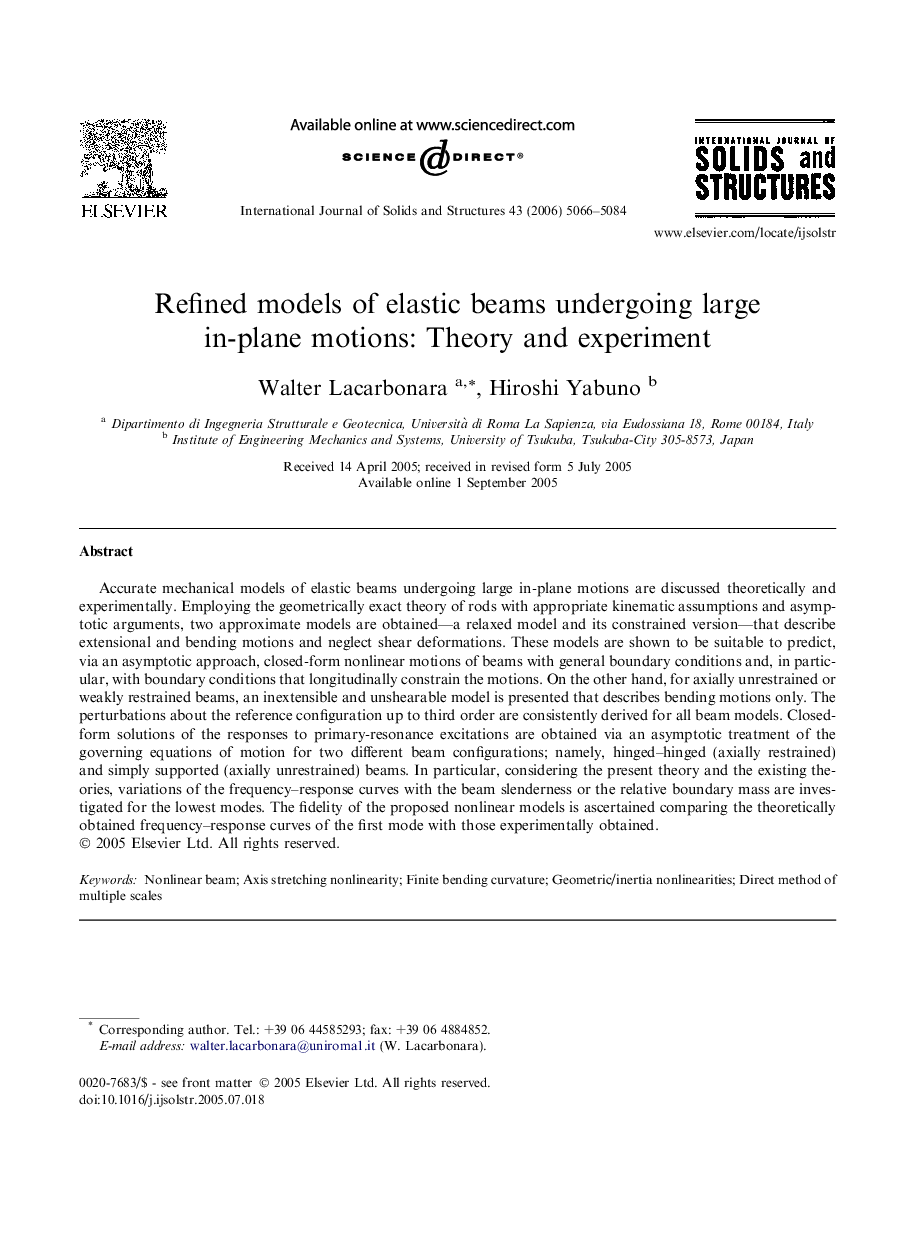| Article ID | Journal | Published Year | Pages | File Type |
|---|---|---|---|---|
| 280223 | International Journal of Solids and Structures | 2006 | 19 Pages |
Accurate mechanical models of elastic beams undergoing large in-plane motions are discussed theoretically and experimentally. Employing the geometrically exact theory of rods with appropriate kinematic assumptions and asymptotic arguments, two approximate models are obtained—a relaxed model and its constrained version—that describe extensional and bending motions and neglect shear deformations. These models are shown to be suitable to predict, via an asymptotic approach, closed-form nonlinear motions of beams with general boundary conditions and, in particular, with boundary conditions that longitudinally constrain the motions. On the other hand, for axially unrestrained or weakly restrained beams, an inextensible and unshearable model is presented that describes bending motions only. The perturbations about the reference configuration up to third order are consistently derived for all beam models. Closed-form solutions of the responses to primary-resonance excitations are obtained via an asymptotic treatment of the governing equations of motion for two different beam configurations; namely, hinged–hinged (axially restrained) and simply supported (axially unrestrained) beams. In particular, considering the present theory and the existing theories, variations of the frequency–response curves with the beam slenderness or the relative boundary mass are investigated for the lowest modes. The fidelity of the proposed nonlinear models is ascertained comparing the theoretically obtained frequency–response curves of the first mode with those experimentally obtained.
